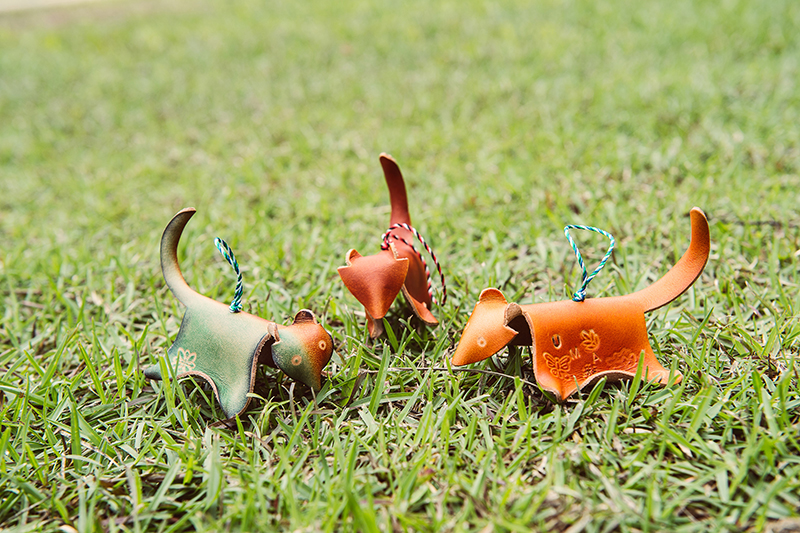From the unique tanning crafts to farming tools and toys, the Tsou source material and inspiration from the forest and turn different handicrafts into new community features, which in turn, is used as medium to display their culture to outsiders.

Tanning is the process of turning animal skin into clothing and ornaments, it is an embodiment of the traditional skills and culture of the Tsou. After hunting, the hunter will separate the skin from the meat and the skeleton while it is still “fresh”
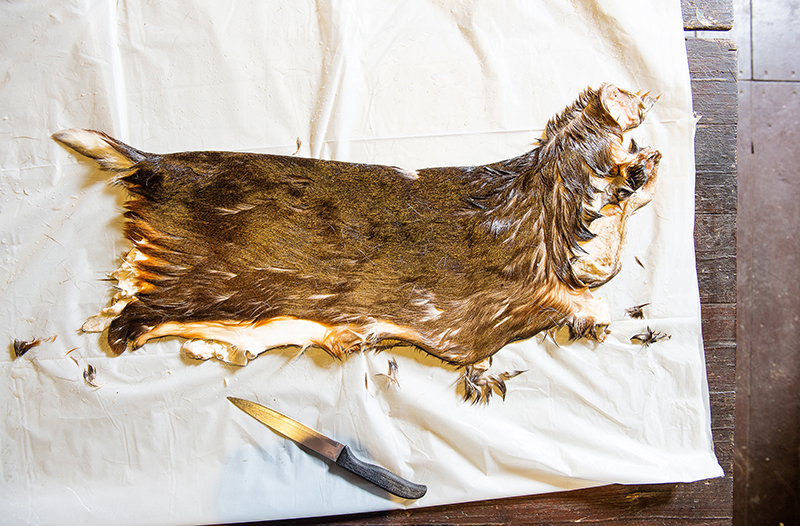

Expand the animal skin by piercing holes along the side of the skin with a knife at intervals of the width of a finger, then take four sticks of bamboo and skewer the four sides of the skin to form a bamboo frame that is larger than the skin itself. The bamboo frame formed by the four sticks of bamboo expands the animal skin with tension. It is then placed under the sun for 2 weeks until the skin is completely dry.
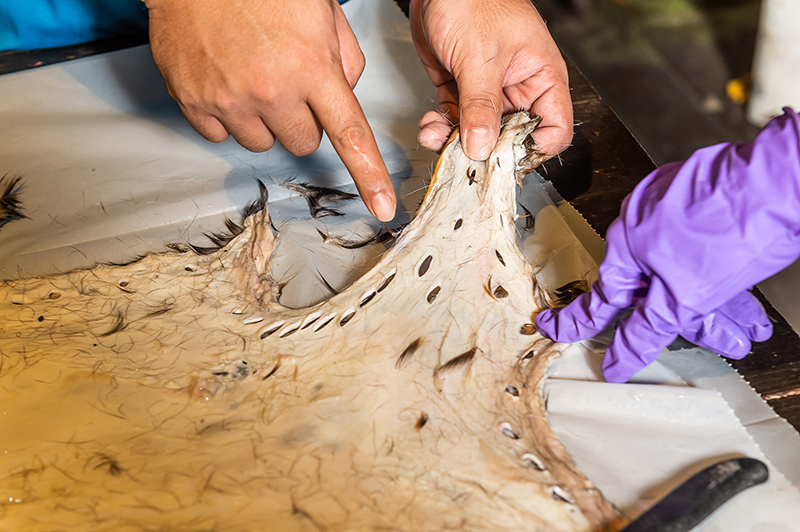
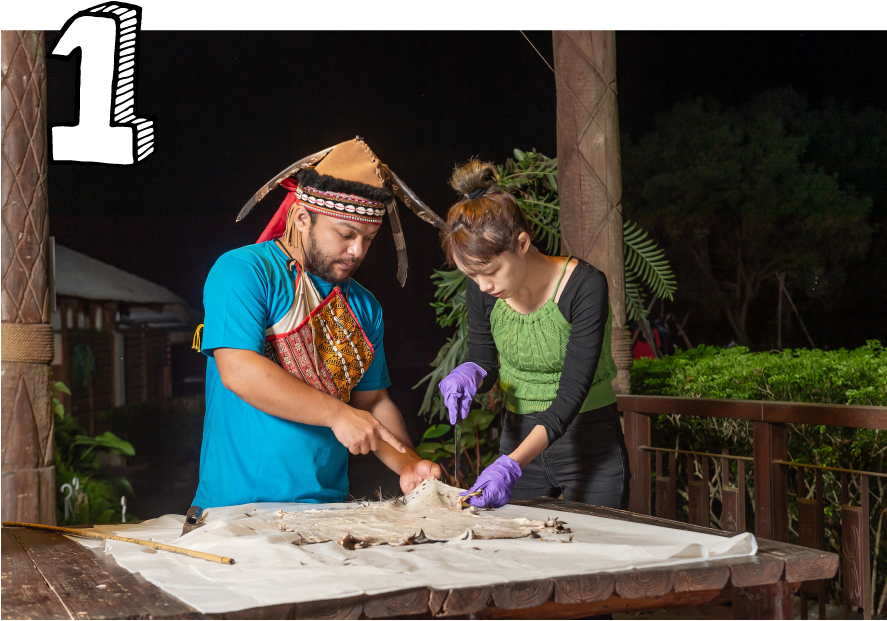
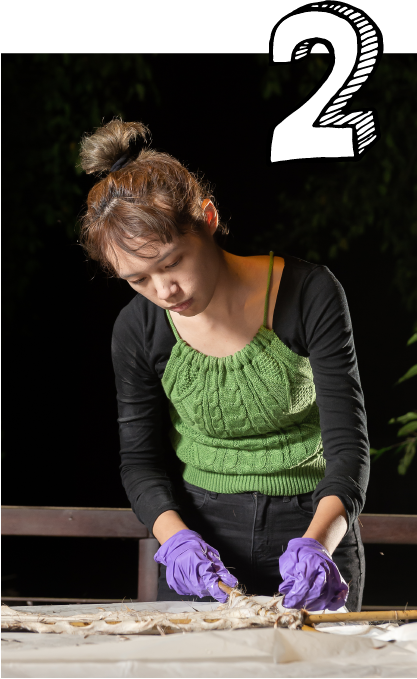
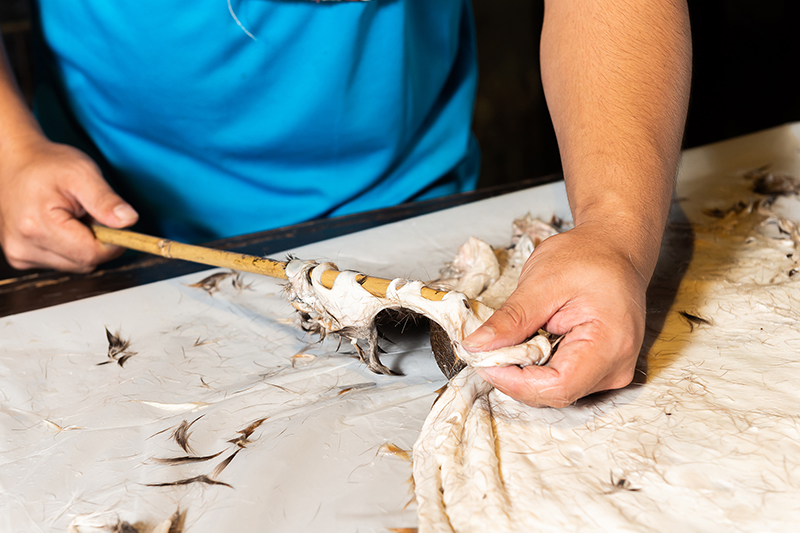
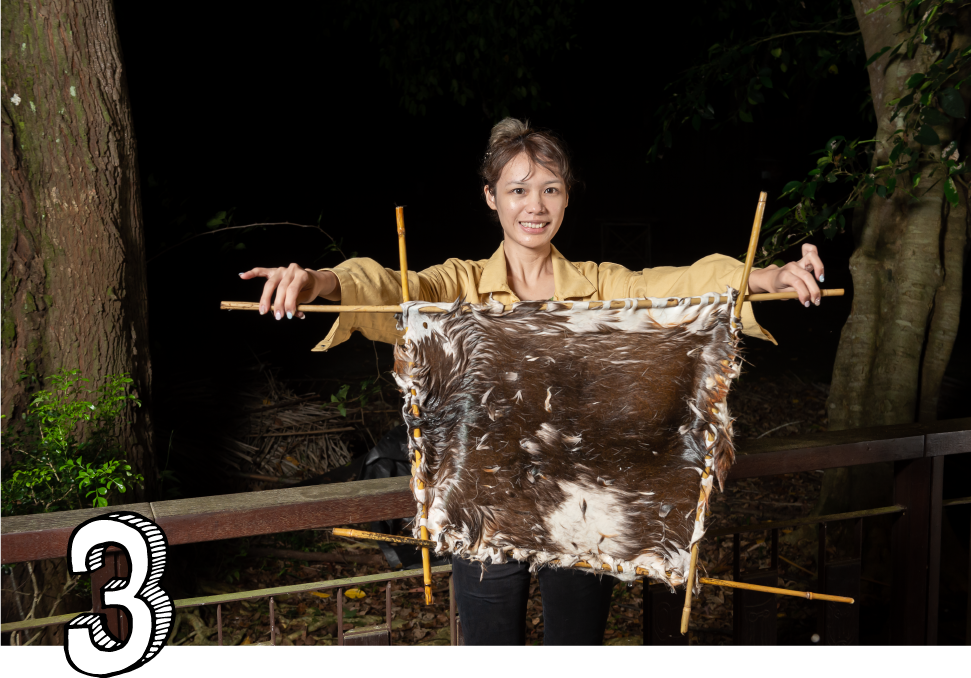

The sun-dried animal skin is very stiff. They will work in a pair, each holding one side of the skin to rub it back and forth on rods made with wood such as Yellow Rotang Palm. This will soften the skin. The tanned leather can then be made into clothing and accessories based on the species of the animal and its size.
Tanning requires two people to continuously tug the skin in both ways. It is extremely exhausting and is usually handled by the younger and stronger people in the community.
*The craft of turning animal skin into clothing is very time-consuming, therefore the team was not able to take part in the tanning process. But we can thus imagine how the significant investment of time and effort in traditional cultures can shape people’s identity towards their indigenous culture.


It is a toy played by the elders to kill time. The Tsou spinning top is unique in the fact that it has a waist. The spinning top is spun with a ramie string wrapped around the waist and tugged by a bamboo stick. People usually start from the largest and spin all the way down to the smallest spinning top.


The wind whistle began as an alerting tool. The bamboo slice makes a whizzing sound when cutting through the wind, which can travel far. When emergencies such as invasions of other indigenous groups occur, those guarding the higher ground will start swinging the wind whistle to alert people in the community that something is up. It later became a toy and a tool to chase away birds.
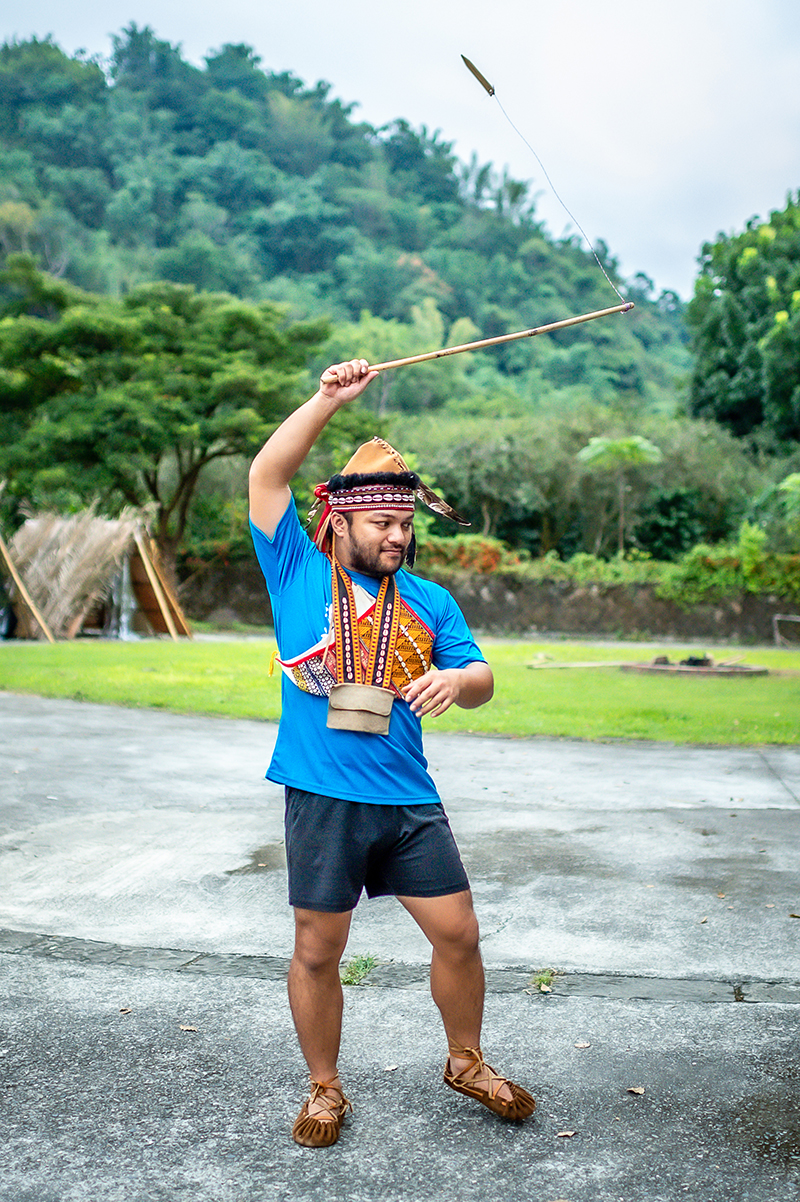
When the wind whistle is swung.
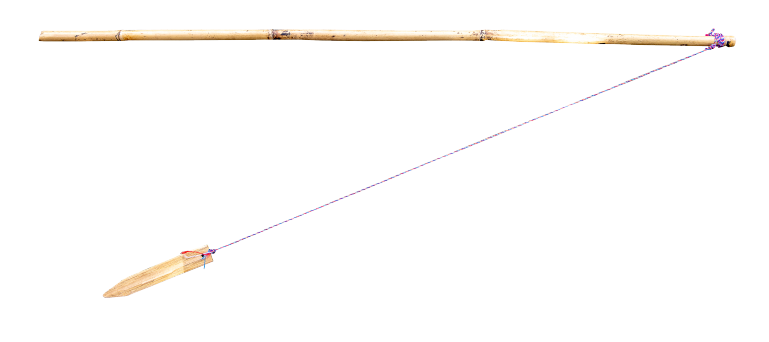
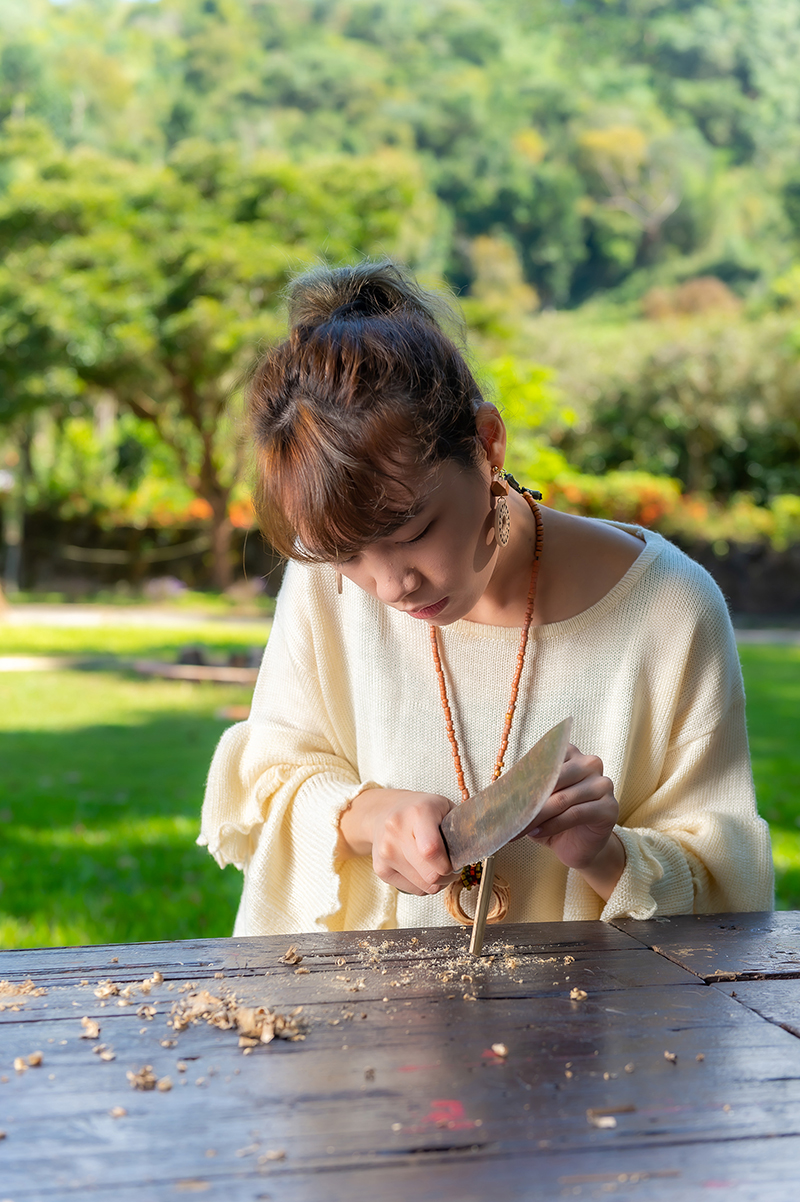
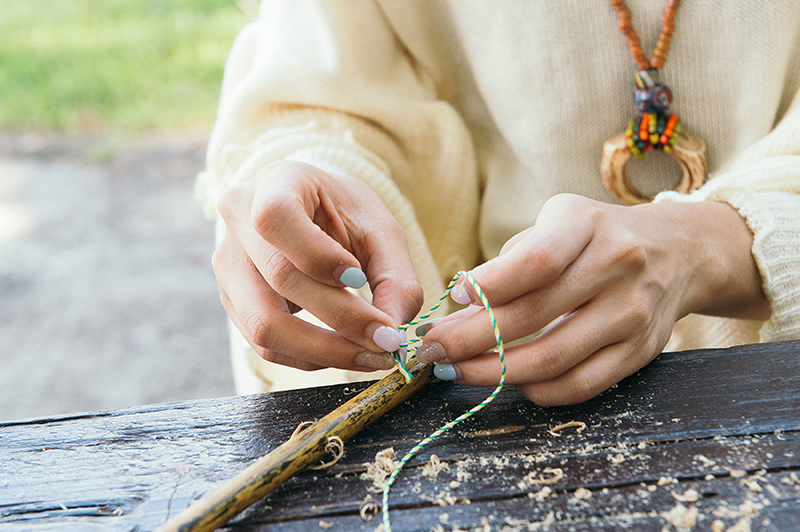
The bamboo slice is in the shape of an arrow, it is first sharpened and thinned, then a hole is drilled to loop the thread through. The thinner and smaller the bamboo slice, the sharper the sound it makes.
 The main reason we do not have many songs or dances is because we are on alert all the time in the mountain, safeguarding our traditional territory.
The main reason we do not have many songs or dances is because we are on alert all the time in the mountain, safeguarding our traditional territory.

The bamboo tube is sliced down the middle and tapped against one another to make sounds. Farmers patrol the fields carrying the bird chaser, tapping it as they walk around the field to chase the sparrows away.


Tie together two sweet bamboo tubes, which can hold approx. 20 liters of water combined. It comes in larger versions. The Tsou would wrap a piece of black cloth around the forehead to hold the strap of the carrier. The women are in charge of carrying water, and children will also help to collect water once they grow up.
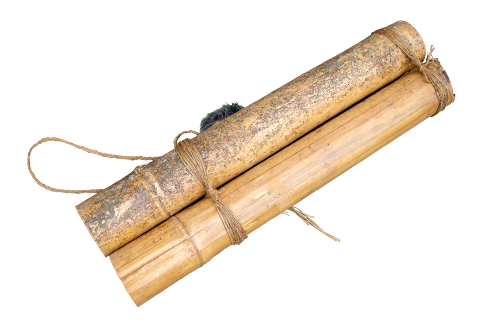
Everyone used to have farming chores in the former days and had to take their young child with them to work, so they used to weave baby baskets with bamboo the height of one’s waist, and the women will carry the baby basket while working in the fields. The bottom of the baby basket is padded with things and the child sits on top of them. This way, when feeding is required halfway through work, they can simply lower the baby basket and conveniently feed or comfort the child without having to bend down, since the child is already raised higher.

Sayungu moved here from Tapangx Community after she got married and combined her leather carving expertise with local features to create a community map and leather carved dolls. The accessible toys help visitors get to know the indigenous culture better.
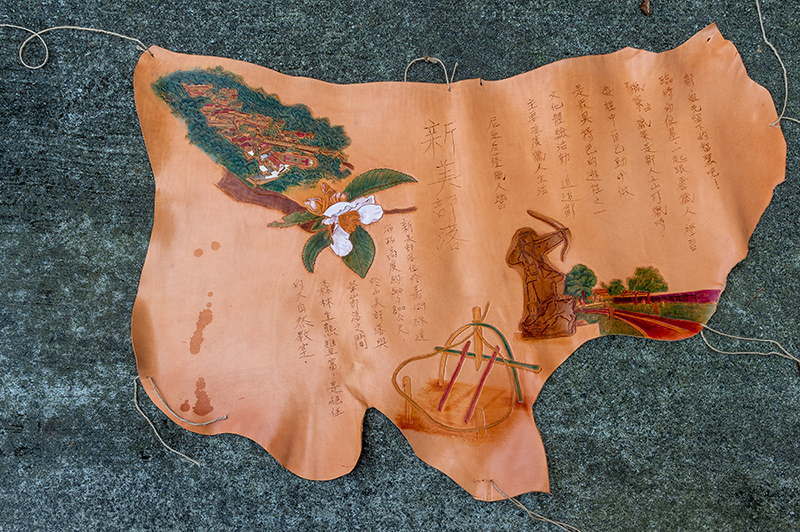
✦Aerial view of Niahosa Community, including the hunter camp, elementary school, culture and health station, grocery store, medical station, church, and dump site, all depicted by Sayungu with her tools.
✦Oil Camellia, giving Niahosa Community the name of the Land of Oil Camellia.
✦The hunter statue, symbolizing the hunter’s culture which the Tsou prides itself on.


